

 | Molecular & Cellular Biomechanics |  |
DOI: 10.32604/mcb.2022.019005
ARTICLE
A New Approach through the Eye of a Needle and Its Potential Application in Bioscience
1School of Biomedical Engineering, Capital Medical University, Beijing, 100069, China
2Beijing Key Laboratory of Fundamental Research on Biomechanics in Clinical Application, Capital Medical University, Beijing, 100069, China
3Faculty of Environment and Life, Beijing University of Technology, Beijing, 100124, China
4Intelligent Physiological Measurement and Clinical Translation, Beijing International Base for Scientific and Technological Cooperation, Beijing, 100024, China
*Corresponding Author: Aike Qiao. Email: qak@bjut.edu.cn
Received: 28 August 2021; Accepted: 03 May 2022
Abstract: Putting the thread through the eye of a needle is a very ordinary issues in daily life. The mechanism of putting the thread through the eye of a needle is quite similar to threading a series of polymer chains through synthetic macrocycle in bioscience. A new rubbing approach to thread through the eye of a needle was proposed in this paper, and its potential application in the fields of biomechanics and mechanobiology to mimic the micro scale assembly processes was discussed.
Keywords: Polymer chains; synthetic macrocycle; micro assembly; biomechanics; mechanobiology
In everyday life, it is usual to do some sewing. Putting the thread through the eye of a needle is a key issue in this process. There are some well-known approaches to accomplish mission, while some of them are easy and others are hard.
The threading of a series of polymer chains through synthetic macrocycle is quite similar to the process of putting the thread through the eye of a needle. The polymeric thread of single-stranded DNA translocates through a pore in the protein DNA-polymerase during DNA replication. Similarly, a protein moves through a pore in a cell membrane [1]. A DNA molecule could be chemically ratcheted along the track in either direction, which is a prerequisite for nanopore sequencing [2]. The complexity and multistep syntheses of rotaxane-catalysts is yet an unsolved problem, and the role of the macrocycle is one way to look at rotaxanecatalysis in order to understand the potential of rotaxane-catalysts [3].
The biggest puzzle remains the mechanism by which the camel (large folded proteins) can pass through the eye of the needle (the import complex) [4]. Rowan et al. proposed a model system that provides a deeper understanding of the process [5]. The model consists of a macrocycle and a polymer chain. The free end of the polymer must be aimed at and threaded through the macrocycle. This process is as hard as that in putting the thread through the eye of a needle.
Considering these common concerns, we will introduce the ordinary approaches and propose a new approach to through the eye of a needle, and then hypothesize its potential application in bioscience.
2 Ordinary Approaches to through the Eye of a Needle
The first challenging problem in doing some sewing is to put the thread through the eye of a needle. The ordinary method is to rub the end of the thread to make it thin and sharp, and then aim at the eye of the needle, and then try to put the end of the thread through the eye of the needle (Fig. 1). This process is challenging because the end of the thread is always soft without enough rigidity and aiming at the so small eye of a needle is very difficult, especially when there are too many tiny cilia which increase the friction and resistance of the end of the thread going through the eye of the needle. Many times of attempt are inevitable before successfully putting the thread through the eye of a needle.
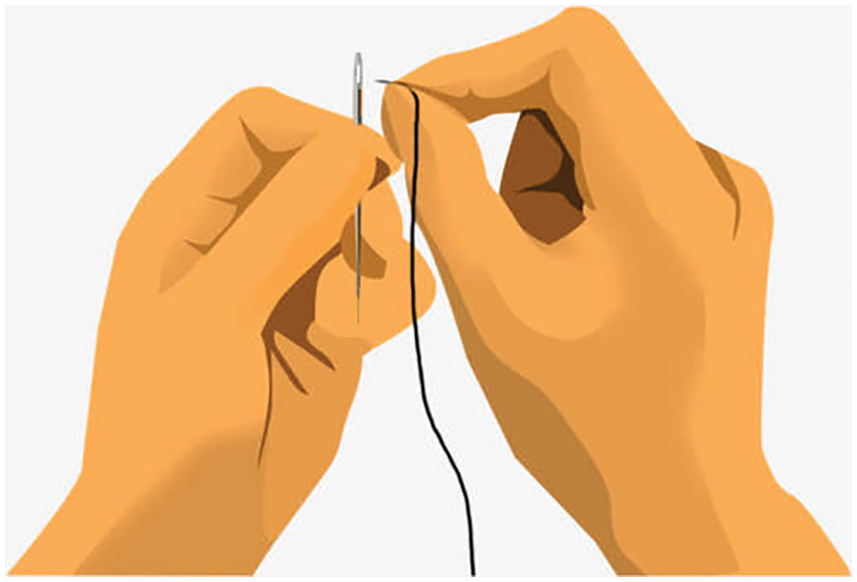
Figure 1: The ordinary method of putting the end of the thread through the eye of the needle
Some devices are designed to overcome the abovementioned difficulty. Fig. 2 shows one of them. The mechanism of this device is to replace the soft end of the thread and the small eye of the needle with the more rigid and wider metal ring (Fig. 2).
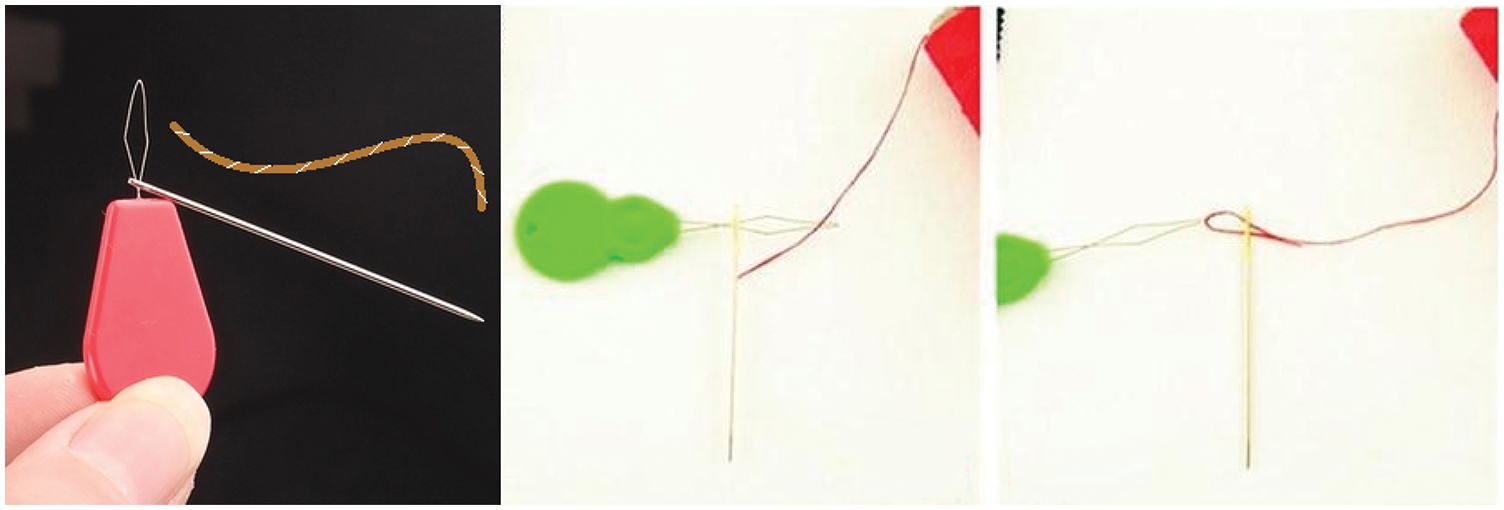
Figure 2: A typical device aiding to put the thread through the eye of a needle
3 A New Approach to through the Eye of a Needle
How can we decrease the difficulty and increase the success rate of putting the end of thread through the eye of a needle without any assisted devices? There is indeed an alternative. We can call it the rubbing approach.
Fig. 3 shows the rubbing approach to thread through the eye of a needle. First, put the thread on the index finger (other fingers also work). Second, press the thread with the eye of the needle. Then, rub the thread by reciprocating the needle eye along the thread. After several times of reciprocation, the thread may penetrate the eye of the needle.
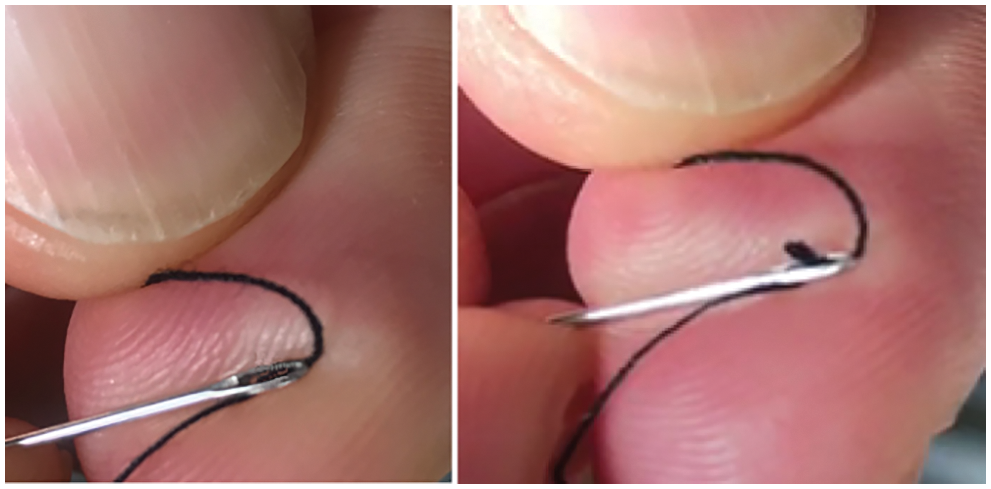
Figure 3: Rubbing approach to thread through the eye of a needle
The mechanism of this process is explained as follows. As seen in Fig. 4, the friction force at point A is larger than that at point B when the needle moves right, because point A features a sharp contact corner and point B features a round contact corner in the moving direction, then the thread may penetrate into the eye of the needle by the pushing force of the finger (the solid black arrow in Fig. 4). The situation is vice versa when the needle moves left. The thread can be pushed into the eye of the needle after several rounds of reciprocation.
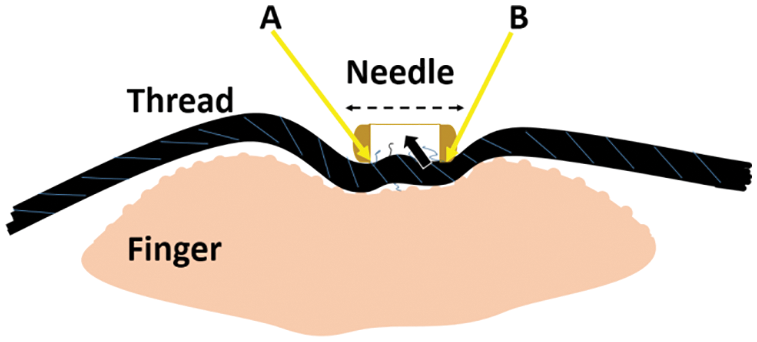
Figure 4: A new approach to put the thread through the eye of a needle
Some factors may influence the abovementioned process. (1) The finger has an uneven convex surface which can provide just fine friction and support to the thread. A flat or concave or sleek surface is not as convenient as a convex surface. (2) The finger is just soft enough to deform under the pressure of the needle. If the substrate is too hard to deform or too soft to support the neddle, the thread cannot be pressed into the eye of the needle. Besides a finger, a soft rubber with convex surface can also work. (3) The thread is coarse with tiny cilia. A very much smooth thread cannot produce enough friction to create the pushing force as shown in Fig. 4 (the solid black arrow). A cotton thread is easier to go through the eye of a needle than a nylon thread. (4) The pressure on the needle and the movement speed of the needle is just large enough to provide necessary friction on the thread.
4 Potential Application of the New Approach in Bioscience
Based on the mechanism of the abovementioned new rubbing approach to put the thread through the eye of a needle, we associate some ideas with regards to biological processes.
The translocation of biopolymers through pores and channels is a common phenomenon in numerous biological processes. The precise and effective translocation approaches play a fundamental role in this process.
From the micro scale to macro scale, the process of molecular or tissue translocation through pores is fundamental to numerous biological processes or growth phenotype, including the transport of proteins across cell membranes, the infection of a host cell by viral DNA, the packing of DNA into viral capsids, and vines growing through holes, etc.
The mechanism of the threading of a series of polymer chains through synthetic macrocycle is quite similar to the approach of putting the thread through the eye of a needle as shown in Fig. 5.

Figure 5: Examples of threading polymer chains through macrocycle [6–8]
There are three kinds of model representing the mechanisms of the threading process in bioscience (Fig. 6).

Figure 6: Schematic representations of the mechanisms of the threading process. (A) straight chain threading mode; (B) cat biting its own tail threading mode; (C) folded chain threading mode
Obviously, it is of great difficulty and poor efficiency for the free end of the polymer to aim at and thread through the macrocycle, because the free end of the polymer lacks sufficient rigidity like the soft end of a thread and the macrocyle is very small like the eye of a needle. Meanwhile, it is impractical to assemble a device to assist this process in biological body. Hence, we propose a hypothesis: Might the polymer or protein chains be “rubbed” through the eye of the macrocycle just like the proposed new rubbing approach through the eye of a needle?
In biological systems, the transport of biopolymers through pores in membranes is following the twin-arginine translocation (Tat) pathway [9]. This process involves the translocating a fully folded protein across the cytoplasmic membranes of prokaryotes and the thylakoid membrane of plant chloroplasts [10].
It has been recognized that a flexible polymer can adopt back-folded bands. Researchers have discovered that alkyl chains adopt a U-shaped conformation in the cavity of cucurbituril, similar to that found for fatty acids bound to fatty acid binding proteins [11–13].
The structures and photocrosslinking experiments indicate that the retrotranslocation of an ERAD-L substrate is initiated by loop insertion of the polypeptide into the membrane (Fig. 7) [14].
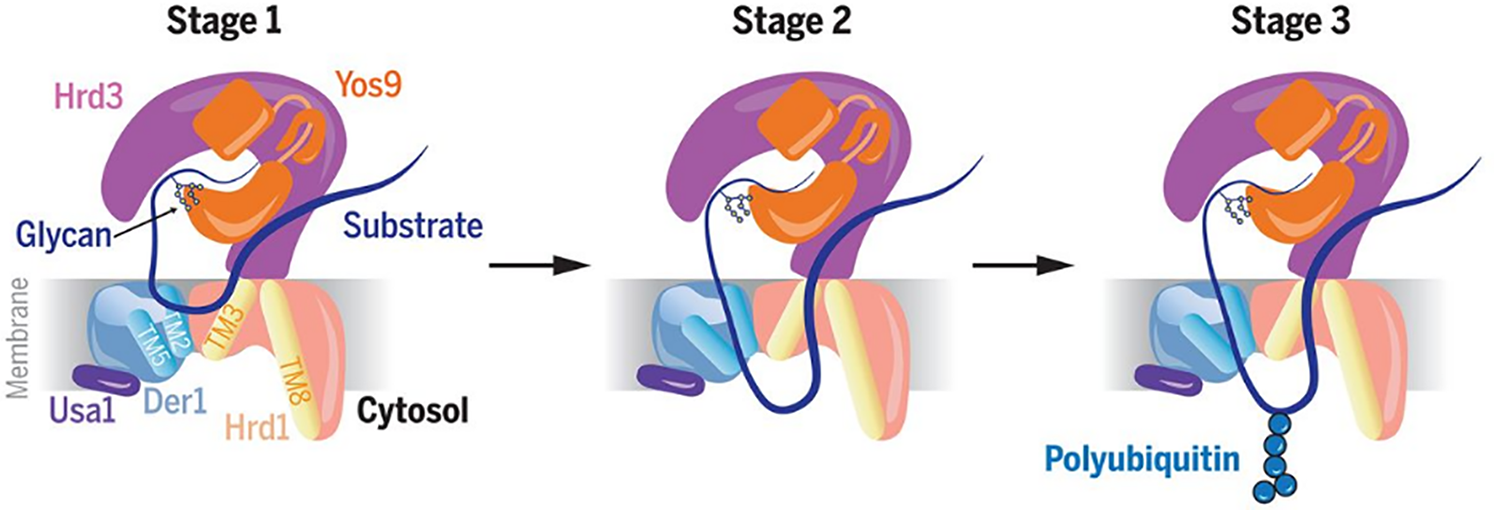
Figure 7: Model for the first three stages of retrotranslocation through the Hrd1 complex. The substrate inserts into the retrotranslocon as a hairpin [14]
After all, just as the abovementioned new rubbing approach to through the eye of a needle, rubbing decrease much complexity of aiming and treading through the eye of a needle even though the process is random. This mechanism might be more favourable for some biological processes, such as translocating biopolymers through pores in membranes, because the macrocycle does not have to find the open end of the polymer chain, but can start the threading process at any position on the polymer chain.
The implication of the proposed hypothesis is that it can be used to explain some biological phenomena, and it can be used to design or control the structures and fabrication technology for complex medicine or bionic materials. We hope more detailed studies to examine this hypothesis.
To be honest, there are some pros and cons for the proposed hypothesis. The benefits of this new rubbing approach are: it decreases the requirement of precise orientation of the thread; the process of treading through the eye can happen at a random manner; thus it decreases the difficulty of treading through the eye. Obviously, the drawback of this new rubbing approach is: the random manner may decrease the precision of treading through the eye, which limits the application scenario of this new rubbing approach.
A new rubbing approach to thread through the eye of a needle was proposed, which can be applied to mimic the mechanism of the threading of a series of polymer chains through synthetic macrocycle, and hence may be of potential application significance in bioscience.
Funding Statement: (1) National Natural Science Foundation of China, 12172018, AQ. (2) Joint Program of Beijing Municipal–Beijing Natural Science Foundation, KZ202110005004, AQ.
Conflicts of Interest: The authors declare that they have no conflicts of interest to report regarding the present study.
1. Davey, S. (2009). Through the eye of a needle. Nature Chemestry, 322, 1668. DOI 10.1038/nchem.108. [Google Scholar] [CrossRef]
2. Qing, Y., Ionescu, S. A., Pulcu, G. S., Bayley, H. (2018). Directional control of a processive molecular hopper. Science, 361(6405), 908–912. DOI 10.1126/science.aat3872. [Google Scholar] [CrossRef]
3. Kwamen, C., Niemeyer, J. (2021). Functional rotaxanes in catalysis. Chemistry–A European Journal, 27(1), 175–186. DOI 10.1002/chem.202002876. [Google Scholar] [CrossRef]
4. Lanyon-Hogg, T., Warriner, S. L., Baker, A. (2010). Getting a camel through the eye of a needle: The import of folded proteins by peroxisomes. Biology of the Cell, 102(4), 245–263. DOI 10.1042/BC20090159. [Google Scholar] [CrossRef]
5. Deutman, A. B. C., Monnereau, C., Elemans, J. A. A. W., Ercolani, G., Nolte, R. J. M. et al. (2008). Mechanism of threading a polymer through a macrocyclic ring. Science, 322(5908), 1668–1671. DOI 10.1126/science.1164647. [Google Scholar] [CrossRef]
6. Deutman, A., Cantekin, S., Elemans, J., Rowan, A. E., Nolte, R. J. M. (2014). Designing processive catalytic systems. Threading polymers through a flexible macrocycle ring. Journal of the American Chemical Society, 136(25), 9165–9172. DOI 10.1021/ja5032997. [Google Scholar] [CrossRef]
7. Wu, Q., Rauscher, P. M., Lang, X., Wojtecki, R. J., de Pablo, J. J. et al. (2017). Poly[n]catenanes: Synthesis of molecular interlocked chains. Science, 358(6369), 1434–1439. DOI 10.1126/science.aap7675. [Google Scholar] [CrossRef]
8. Tranquilli, M. M., Wu, Q., Rowan, S. J. (2021). Effect of metallosupramolecular polymer concentration on the synthesis of poly[n] catenanes. Chemical Science, 12(25), 8722–8730. DOI 10.1039/D1SC02450G. [Google Scholar] [CrossRef]
9. Alexander, B. C. D., Varghese, S., Moalin, M., Elemans, J. A. A. W., Rowan, A. E. et al. (2015). Slippage of a porphyrin macrocycle over threads of varying bulkiness: Implications for the mechanism of threading polymers through a macrocyclic ring. Chemistry A European Journal, 21(1), 360–370. DOI 10.1002/chem.201403740. [Google Scholar] [CrossRef]
10. Rodriguez, F., Rouse, S. L., Tait, C. E., Harmer, J., de Riso, A. et al. (2013). Structural model for the protein-translocating element of the twin-arginine transport system. Proceedings of the National Academy, 110(12), E1092–E1101. DOI 10.1073/pnas.1219486110. [Google Scholar] [CrossRef]
11. Ko, H., Kim, H., Kim, Y., Kim, K. (2008). U-shaped conformation of alkyl chains bound to a synthetic host. Angewandte Chemie International Edition, 47(22), 4106–4109. DOI 10.1002/(ISSN)1521-3773. [Google Scholar] [CrossRef]
12. Ko, Y. H., Kim, H., Kim, Y., Kim, K. (2008). U-shaped conformation of alkyl chains bound to a synthetic host. Angewandte Chemie, 120(22), 4174–4177. DOI 10.1002/(ISSN)1521-3757. [Google Scholar] [CrossRef]
13. Shi, Q., Masseroni, D., Rebek, J. J. R. (2016). Macrocyclization of folded diamines in cavitands. Journal of the American Chemical Society, 138(34), 10846–10848. DOI 10.1021/jacs.6b06950. [Google Scholar] [CrossRef]
14. Wu, X., Siggel, M., Ovchinnikov, S., Mi, W., Svetlov, V. et al. (2020). Structural basis of ER-associated protein degradation mediated by the Hrd1 ubiquitin ligase complex. Science, 368(6489), 385. DOI 10.1126/science.aaz2449. [Google Scholar] [CrossRef]
 | This work is licensed under a Creative Commons Attribution 4.0 International License, which permits unrestricted use, distribution, and reproduction in any medium, provided the original work is properly cited. |